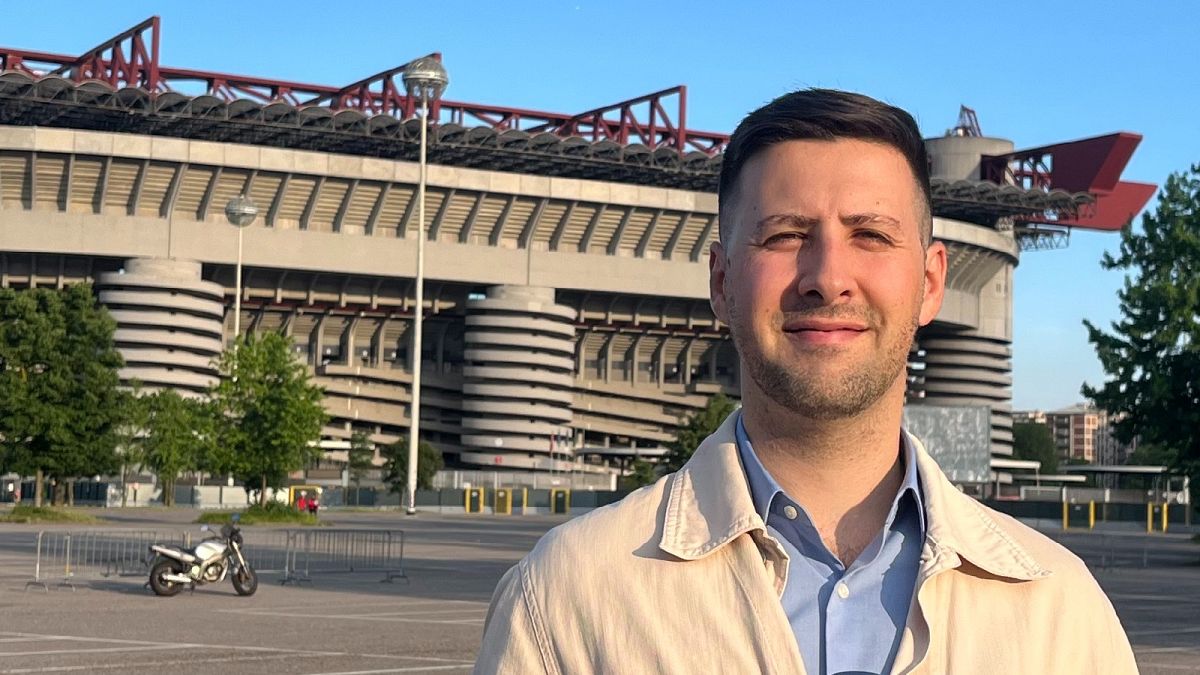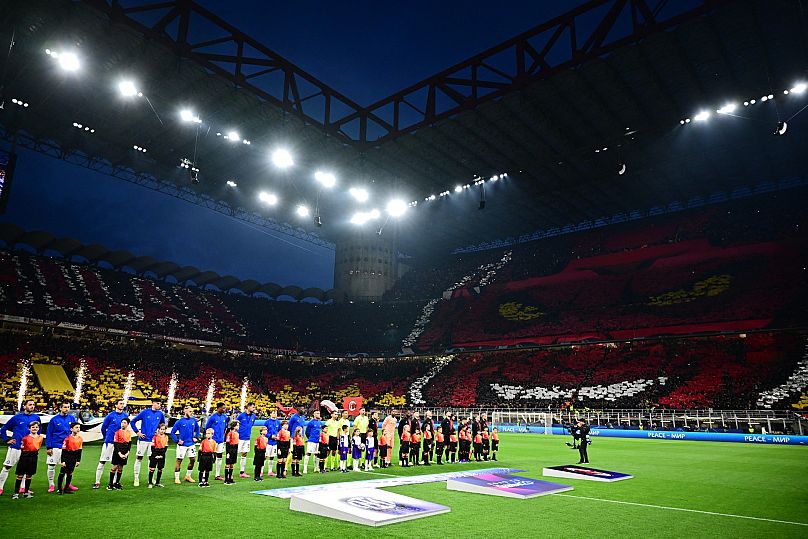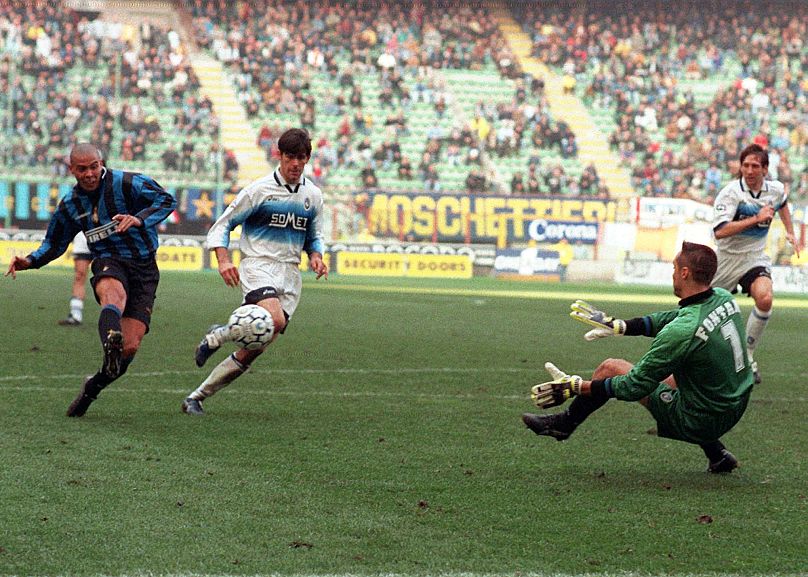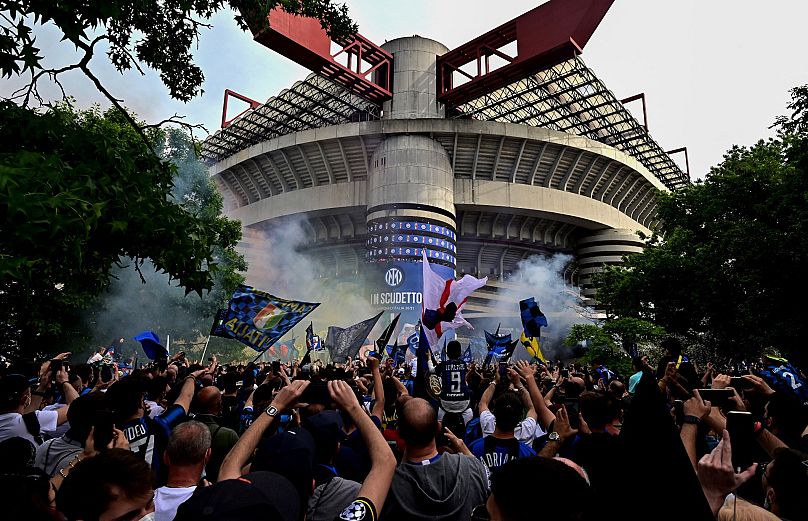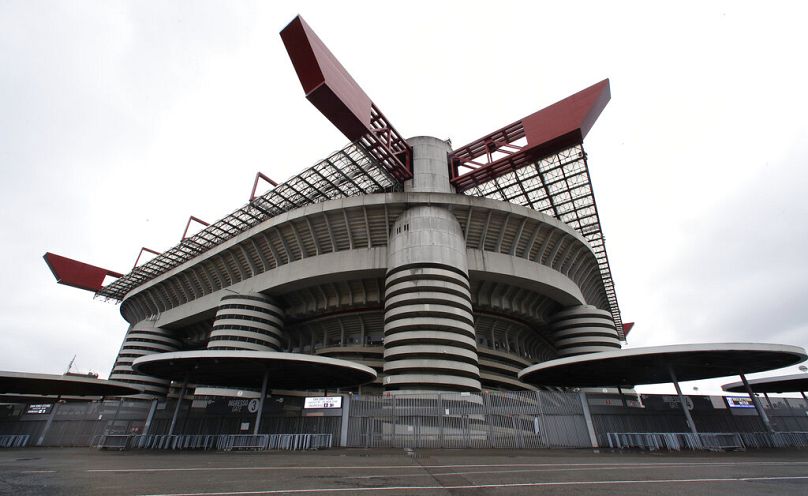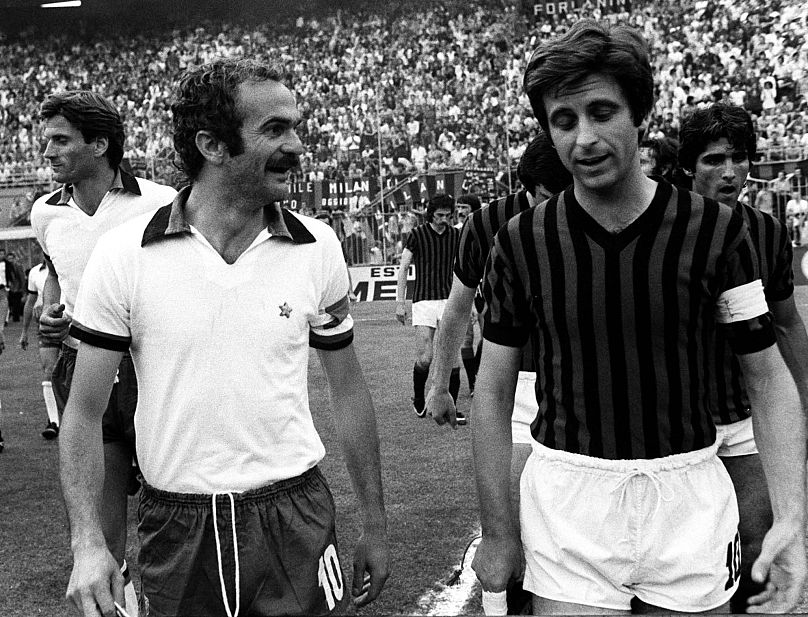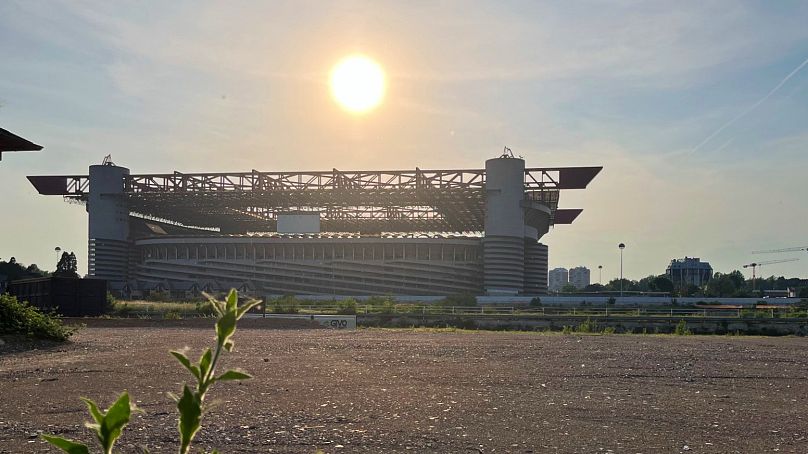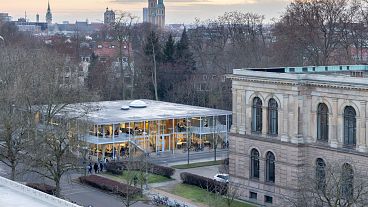An eyesore for some, a site of worship for others, Milan's legendary San Siro stadium has been saved from destruction after local Lombardy authorities recognised its 'cultural interest'. Inter fan Alessio Dell'Anna says the move reflects the stadium's significance in his life.
Earlier this month, Milan's legendary Giuseppe Meazza stadium, aka the San Siro, was rescued from a destruction order. The Lombardy regional authority's cultural heritage commission decided the historic stadium's second floor is worthy of protection.
Built in 1925, one might think Italy has more than its fair share of architectural wonders so that a football stadium shouldn't get a look in. But, that view would greatly ignore what, for me, is the world's best concrete cathedral erected in honour of the beautiful game.
My first experience at San Siro felt more like a tribal initiation than a fun, playful afternoon.
I was five or six years old. I can't remember much of what happened on the pitch, or whether it was Inter or Milan playing, but I clearly recall the ominous and intimidating feeling produced by the noise.
For years, every time I stepped onto the stands with my dad - after hiking up San Siro's endless spiral stairs - I feared that sound was going to shoot my small body up into the air and wipe it away.
The chants, the screams and the bangs of those 80,000 people were rumbling and savage. Nothing that I could have been prepared for.
In the mid-90s, Milan was still very much a grey and filthy city. Cigarette smoke hung heavy in bars, rubbish was strewn across the streets, and heroin syringes were scattered around playgrounds.
The stadium surroundings were no exception. And yet within that air, dense with smells of beer and pork sausages, and inside those immense crowds, there was something liturgical and almost mystical.
San Siro, like a mountain top, could be seen from kilometres away, and heading there felt somewhat like a pilgrimage. The run-ups to the games were rituals marked by prayers to the gods of football. My idol, at the time, was Ronaldo Luís Nazário de Lima.
There were no turnstiles at the stadium. Every ticket, tens of thousands of them, was checked manually, in a general atmosphere of chaos. The most daring fans, especially during the Derbies, would try to sneak in for free or force their way through.
I was too young and not fool-hardy enough for that, but, once I started going to San Siro alone, I couldn't help trying to take advantage too of that modern-day wild west.
One day I turned up with a friend at the gates. We had no tickets or money to buy them, and we candidly asked the steward to let us watch the second half of a game. It was in the mid-2000s, Inter had just signed Luís Figo, and when we got through I felt like I had won the lottery.
San Siro memories and nightmares...
I'll never forget witnessing Inter's elimination in the 2000/2001 Champions League playoffs against a Swedish team which now play in the second division - Helsingborg IF - or, worst of all, being knocked out from the Champions League semifinals by AC Milan, in 2003. I think it was the last time I cried for a football game.
I had to wait two decades to see Inter's revenge with a humbling 3-0 over the Rossoneri.
That was really special because not only did I have the chance to be at the stadium again for such a big occasion, alongside my father, but I was also covering the event for Euronews.
It was almost impossible to hide my feelings surrounded by dozens of rejoicing Inter fans.
Each to their own: One city, two stadiums
Today, San Siro's future remains unclear.
The building dates back to 1925. Although it underwent renovations and enlargements, the signs of times are evident and do not do justice to its glorious past.
Demolishing it and building a brand new stadium - just like what happened to Wembley - was initially an option. However, the municipality of Milan halted the plan after Lombardy's Cultural Commission recognised its "intangible cultural heritage".
More or less like what happens in Rome when you can't build a new metro station because they find an ancient Roman villa buried nearby.
Transforming architectural limits into art
Lombardy's authorities referred in particular to the design of the wraparound stairs, where the crowds remain visible as they climb up in circle through the structure, creating a dynamic-spiral effect that transforms the outer wall into a living organism.
They also highlighted the importance of the second floor, whose construction, in 1955, brought San Siro's capacity to 85,000. With its 132 "outstretched-arm-looking pillars", they said it's an example of "translating architectural limits into expressivity".
'Crazy' to get rid of San Siro, say football legends, fans and artists
The majority of Inter and Milan fans are for keeping the stadium. When the first demolition rumours began rumbling, many voiced their anger on websites and forums using the slogan "Get your hands off San Siro".
They got immediate support from legends like Gianni Rivera and Sandro Mazzola, who both, in the 1960s, turned Milan into the world football capital by bringing home a total of four European cups in just six years.
World-renowned Italian music artist Laura Pausini also spoke against San Siro's plight. The campaign was also joined by international artists, such as Bruce Springsteen's E Street Band guitarist Steven Van Zandt.
A cathedral in the desert
For the moment, San Siro will stay as it is.
Nonetheless, it remains clear that its illustrious tenants - Inter and AC Milan - will sooner or later move out.
The Serie A rivals need a more modern venue, and, if they had to build their own, they'll do it away from San Siro.
I am not very sentimental, and I don't like the idea of such an iconic building turning into something like an ancient pyramid - empty, largely unused and surrounded by a desert.
But those giant bustling towers spiralling up into the skyline are part of the city's history and a symbol of its vitality.
Wherever its replacements will be built, however fancy, slick or sophisticated they are, whatever comes next will have to go some way before they can replace the emotion of seeing San Siro, let alone the overwhelming sensation of being inside that mythical stadium. A true marvel of modern architecture.
